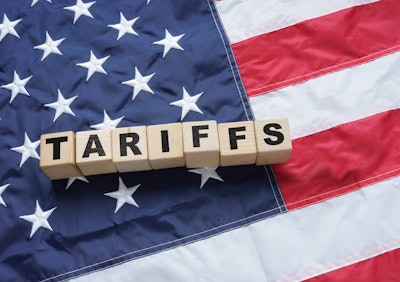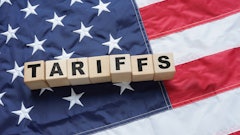
Global trade is holding strong, even as U.S. tariffs hit highs not seen since the 1930s.
In fact, global trade is projected to keep growing, according to the DHL Global Connectedness Tracker, presented by DHL and New York University's Stern School of Business.
The Tracker's composite forecast projects a 2.5% annualized growth rate in global trade volumes from 2025-2029, roughly matching the pace of the previous decade. One reason why trade can continue growing even as the U.S. raises tariffs is that only 13% of global goods imports went to the United States in 2024 and 9% of exports came from the United States. Another is that most countries have not followed the United States in implementing broad tariff increases.
“Despite all the headwinds, the DHL Global Connectedness Tracker highlights the enduring strength of global trade. Trade barriers do not serve the world's best interests. But we must never underestimate the creativity of buyers and sellers around the world who want to do business with each other,” says John Pearson, CEO, DHL Express.
“Trade and international business investment trends so far in 2025 do not support the view that globalization has gone into reverse. While it would be a mistake to disregard current policy threats to globalization, companies are not generally pulling back from international markets, trade is crossing the longest average distance on record, and geopolitical conflicts have reshaped only a small fraction of the world's international activity. The latest data show companies managing the risks and opportunities of a connected world rather than retreating to within countries or regions,” adds professor Steven A. Altman, director of the DHL Initiative on Globalization at NYU Stern’s Center for the Future of Management.
Key takeaways:
· While U.S. tariffs are predicted to slow global trade growth, they are not expected to stop it. Before the current wave of tariff increases (in January), global goods trade volume was forecast to grow at a 3.1% annualized rate over the 2025-2029 period, since downgraded to 2.5%. North America experienced the steepest downgrade, with projections falling from 2.7% in January 2025 to just 1.5% by September. Most other regions experienced smaller downward revisions.
· In contrast, forecasts were upgraded for South and Central America and the Caribbean, as well as the Middle East and North Africa. Most countries in these regions face relatively small U.S. tariff increases, and Middle East trade is expected to benefit from increased oil production and exports.
· In the first half of 2025, international trade grew faster than in any half-year since 2010, excluding the pandemic rebound. U.S. imports surged early in 2025 as buyers rushed to frontload purchases ahead of tariff hikes. China fully offset declining exports to the United States with increased shipments to the ASEAN (Association of Southeast Asian Nations) region, while also substantially growing its exports to Africa, the EU, and other markets. Even after the frontloading wave in the U.S. subsided, global trade volumes remained above prior-year levels.
· Data on international corporate investment during the first half of 2025 were mixed, but underscore the general resilience of global business. There was no pattern of companies redirecting investment from foreign to domestic markets. The cross-border share of M&A deals, for example, remained largely unchanged. However, uncertainty did appear to deter some cross-border investment, especially smaller transactions and new investments during the second quarter of 2025.
· Despite 2024 marking the highest number of active global conflicts since World War II, the DHL Global Connectedness Tracker shows no major split of the world economy between rival geopolitical blocs. While direct U.S.-China ties continue to weaken and Russia is largely disconnected from Western-aligned economies, the world as a whole has not substantially reoriented its business ties along geopolitical lines, at least not yet.
· The DHL Global Connectedness Tracker indicates that trade is not becoming more regional. In fact, the average distance that traded goods traveled rose to a new record of about 5,000 kilometers during the first half of 2025. The share of trade within major world regions fell to a record low of 51%. Greenfield foreign direct investment also became less regional, while international M&A activity remained at a stable level of regionalization.




















